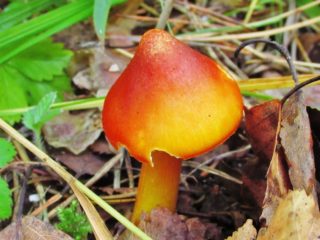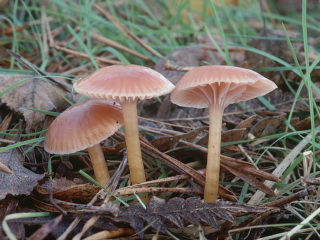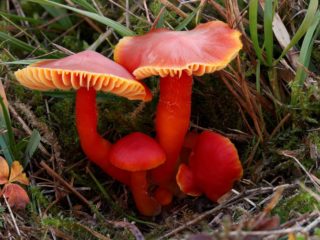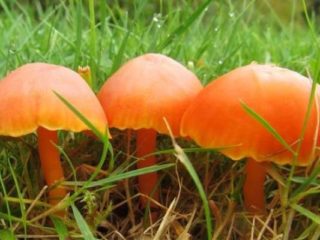Content
A bright mushroom of the Hygrophoraceae family, hygrocybe yellow-green, or dark chlorine, impresses with its unusual color. These basidiomycetes are distinguished by the small size of the fruiting body. Mycologists have different opinions about their edibility; it is assumed that this representative of the Hygrophoraceae family is inedible. In scientific sources, the Latin name of the fungus is found - Hygrocybe chlorophana.
What does Hygrocybe yellow-green look like?
Young mushrooms have a spherical convex cap, the diameter of which does not exceed 2 cm. As it grows, it becomes flat, its dimensions can reach up to 7 cm. In some specimens there is a small tubercle in the center of the cap, in others there is a depression.
The color of the upper part of the fruiting body is bright lemon or orange.
Due to the ability to accumulate liquid, the size of the cap can almost double in wet weather. The edges of the upper part of the fruiting body are uneven and ribbed.
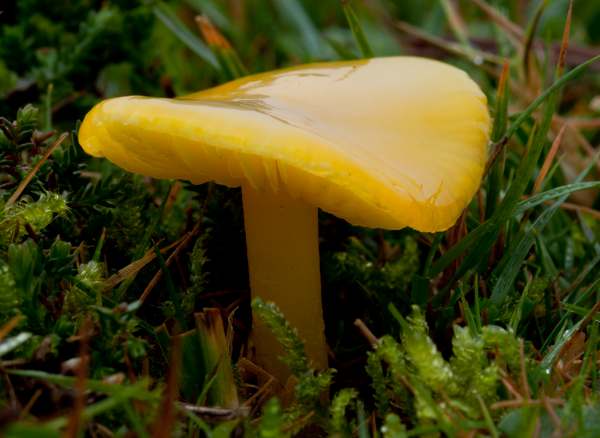
The skin on the surface is smooth, even, but sticky
The yellow-green leg of Hygrocybe is thin, smooth and short, tapering closer to the base. Often its length does not exceed 3 cm, but there are specimens whose stem grows up to 8 cm. Its color is light yellow.
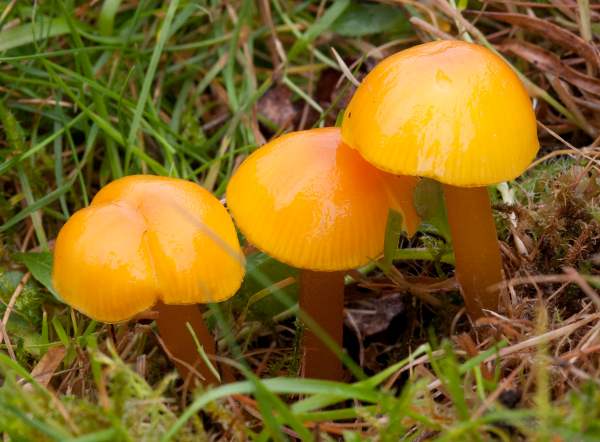
Depending on weather conditions, the skin of the leg may become dry or sticky and moist.
The pulp of the base of the mushroom is brittle and fragile. This is due to the small diameter of the stem - less than 1 cm. Outside, the lower part of the fruiting body is covered with sticky mucus. The inside is dry and hollow. There is no ring or remains of the cover on the leg.
The pulp is thin and fragile. Even with a slight impact it breaks and crumbles. The color of the pulp can be pale or deep yellow. It does not have a specific taste, but a distinct, mushroom smell.
The mushroom hymenophore is lamellar. Initially, the plates are white, thin, long, and over time they become bright orange.
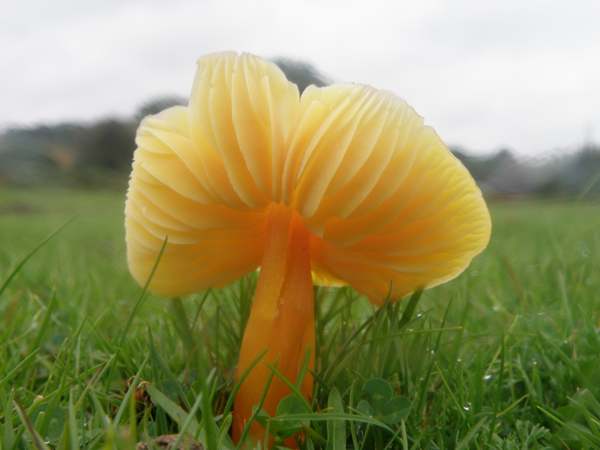
In young specimens the plates are almost free
In old basidiomycetes they grow to the stem, forming a light white coating in this place.
The spores are oval, oblong, ovoid or ellipsoidal, colorless, with a smooth surface. Dimensions: 6-8 x 4-5 microns. The spore powder is fine and white.
Where does Hygrocybe dark chlorine grow?
This is the rarest species of Hygrocybe. Single specimens are found in North America, Eurasia, the mountainous regions of southern Australia, the Crimea, the Carpathians, and the Caucasus.In Russia, rare specimens can be found in Eastern Siberia and the Far East.
In Poland, Germany and Switzerland, the yellow-green hygrocybe is listed in the Red Book of Endangered Species.
The described fruiting body prefers forest or meadow fertile soil, mountainous areas, and is found on pastures rich in organic matter, among moss. Grows solitarily, rarely in small families.
The growth period of Hygrocybe yellow-green is long. The first fruiting bodies ripen already in May, the last representative of the Hygrophoraceae family can be found at the end of October.
Is it possible to eat Hygrocybe yellow-green?
Scientists differ on the edibility of the species. All known sources give conflicting information. It is only known that Hygrocybe yellow-green does not contain toxic substances, but mycologists do not recommend eating the basidiomycete, which has been practically unstudied due to its small population.
Conclusion
Hygrocybe yellow-green (dark chlorine) is a small, bright mushroom, colored in yellow, orange, straw tones. It is practically not found in the forests and meadows of Russia. In some countries it is listed in the Red Book. Scientists do not have a consensus on the edibility of the mushroom. But they are all sure that there are no toxins in its pulp.
